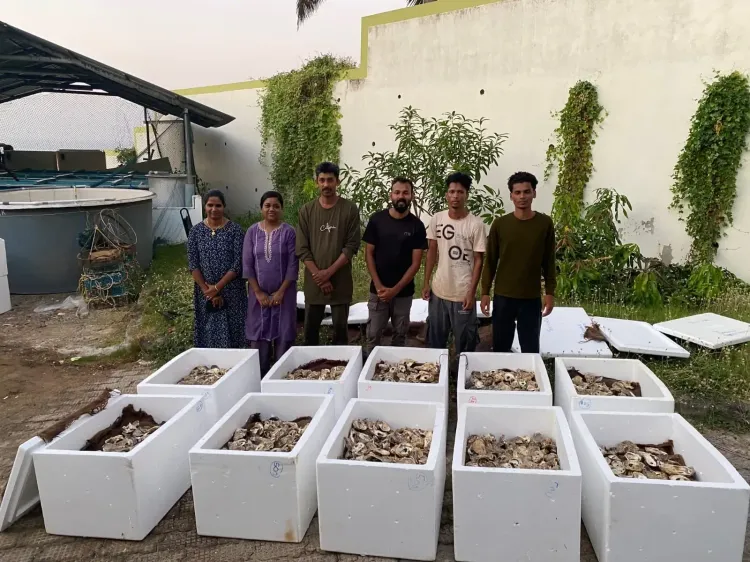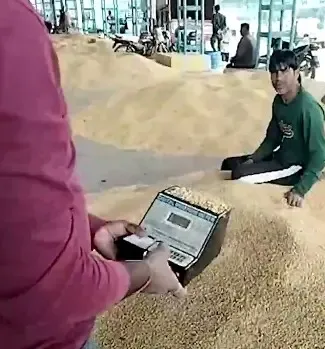CMFRI Provides Assistance to Tribal Farmers in Maharashtra

Synopsis
Key Takeaways
- CMFRI shipped 100,000 oyster spats to Maharashtra.
- Initiative aims to empower tribal communities.
- Oyster farming is a $7 billion industry.
- Advantage of hatchery-produced seed includes disease-free stock.
- Low-investment and high-return aquaculture practice.
Kochi, Feb 14 (NationPress) In a significant milestone, the ICAR-Central Marine Fisheries Research Institute (CMFRI) has successfully generated and shipped approximately 100,000 attached oyster spats to Maharashtra, enabling tribal coastal communities to participate in lucrative oyster farming.
This initiative, in collaboration with the Mangrove & Marine Biodiversity Conservation Foundation of Maharashtra, aims to empower tribal self-help groups through sustainable, high-yield, eco-friendly oyster farming, utilizing hatchery-reared seeds to enhance livelihoods while protecting natural ecosystems.
Oyster farming is a vital global industry, valued at over $7 billion, with rising demand in markets across the US, Europe, and Asia.
Oysters are highly prized for their nutritional advantages, which include high protein levels, essential minerals, and omega-3 fatty acids.
Initially, millions of D-shaped larvae of the Indian backwater oyster (Crassostrea madrasensis) were cultivated at the Vizhinjam Regional Centre hatchery of CMFRI, using broodstock sourced from Ashtamudi Lake in Kerala.
Subsequently, scientists continued to rear these larvae to become spats ready for settlement in oyster shell rens, as producing attached spat is a critical phase in oyster farming.
Each oyster shell typically hosted an average of 6.5 spat, ensuring favorable survival rates.
These spats were securely packed in styrofoam containers with seawater-soaked gunny bags and transported on a 30-hour train journey to Maharashtra.
In comparison to wild-collected seed, hatchery-produced oyster seed presents numerous benefits, including high survival rates, disease-free stock, and uniform size, leading to enhanced yield and predictable production cycles.
This approach also contributes to the conservation of natural oyster beds by mitigating overexploitation and facilitates selective breeding for improved growth and resilience.
M K Anil, Principal Scientist at CMFRI and Principal Investigator for the project, emphasized that unlike conventional aquaculture, oyster farming entails low investment and requires no feeding, thereby minimizing pollution.
"It is a high-return aquaculture practice that allows small-scale farmers to earn sustainable income. With sufficient support, such as access to hatchery-produced seed, rural farmers can explore lucrative oyster farming opportunities in both domestic and international markets," Anil explained.
He also pointed out the potential of the remote setting technique, a cost-effective method employed in the US and Europe.
"This method involves the transportation of oyster larvae instead of attached spat, significantly lowering transportation costs. The larvae can then be affixed to shells at the destination, either on-site or at a central facility," Anil added.









